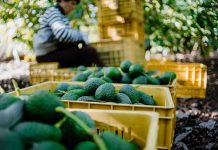
(RepublicanJournal.org) – The federal government offers many assistance programs to help families with children access nutritious food. These food services and banks allow families to bring food home. Although the most popular children’s programs provide meals during the school day, community organizations also offer special weekend and summer programs to help families in these areas. Programs run by the government provide additional funding for food programs, but those run by local non-governmental organizations have higher requirements.
SNAP and TANF
Families should also check to see if they qualify for non-private school aid programs such as SNAP (Supplemental Nutrition Assistance Program) and TANF (Temporary Assistance for Needy Families). Like breakfast and school lunch, SNAP is a USDA Food and Nutrition Service program. Families qualify based on income and assets and must apply through their state’s administrative office. Those eligible can receive cash to spend on goods via an EBT card. Families can apply for TANF benefits through their state’s human resources department. In addition to income and resource requirements, adults often need to work or find work. TANF benefits are available for a limited period not to exceed five years during the recipient’s lifetime.
Backpack Programs
Feeding America and its partners administer funding programs. Students receive their backpacks on Friday or the day before the school break, and each backpack contains enough food to make healthy meals over the weekend. These include whole grains, granola bars, fruit, vegetables, and healthy snacks such as mac and cheese. Families should contact their school district or local food bank to find out if a backpack program is available near them. Some organizations work with schools to distribute backpacks at school, while others have collection locations elsewhere in the community. Eligibility requirements may vary by the program’s organization, but backpacks are available to those who qualify for school breakfast and lunch.
National School Breakfast Program and National School Lunch Program
Nearly twice as many children receive school lunches than school breakfasts. Children who receive free or reduced-price meals are also eligible for breakfast. School breakfasts and lunches must meet specific nutritional requirements so that families can be confident that their children are getting enough nutrition from these meals. Breakfast should provide a quarter of the child’s daily need for calories, protein, and other nutrients, and lunch should be a third.
Families can apply for free or reduced-price breakfast and lunch through their child’s school. In cooperation with federal agencies, the USDA administers school breakfast and lunch. Children are eligible based on family income level or membership in specific categories. To qualify for free meals based on income, a family must earn 130 percent of the federal poverty level or less. For low-cost meals, no more than $0.30 for breakfast and $0.40 for lunch, families can earn between 130 percent and 185 percent of the federal poverty level. Children in a federally funded preschool program, homeless, in foster care, or whose families receive SNAP benefits are also eligible for complimentary breakfast and lunch.
Summer Meal Programs
The summer holidays can be difficult for families who rely on school breakfasts and lunches for healthy meals. Summer meal programs aim to cover dietary needs during the summer holidays. Some of these programs are administered by the USDA, while local food banks run others. Because these programs run independently, finding one cannot be easy. These are great places to start for families using the Bank or Kindergarten program during the school year. Food banks are the same in both types of programs. Families can also call the USDA Helpline at 1-866-348-6479 to find a program nearby. Summer meal programs are usually available to all children and young people aged 18 and under at one location. Recipients do not need to meet any eligibility requirements or register in advance.
Kids Cafe
These programs provide snacks and meals to children in low-income schools. As individual schools and local organizations operate Kids Cafe programs, requirements may vary. Some programs require school registration, while others are open to all children in the organization’s catchment area. Additional after-school activities or services may be available in Kids Cafe programs.
School Meal Pickups
Many schools have organized food drive programs during the coronavirus pandemic to meet the nutritional needs of their students while social distancing continues. Depending on the pressure in a community, these programs are still available when schools are closed, work remotely, or use a hybrid model. If schools in an area are open, food supplies may not be available.
School Pantry Programs
Beneficiaries are students who are not eligible for free lunch, students who attend another school, or families who do not have children in the school but live in the area. School pantries are usually open at specific times, either weekly or monthly. Families can choose items from the shelves or receive prepackaged boxes, depending on the program. Families should check with their school or school district to learn about cafeteria programs.
Many programs help children access good food to learn and grow through the government and non-profit organizations. The topics discussed here are just a starting point for families seeking help. Schools, school districts, hunger nonprofits, and local food banks are good resources to connect with to learn about community resources.
Copyright 2023, RepublicanJournal.org









